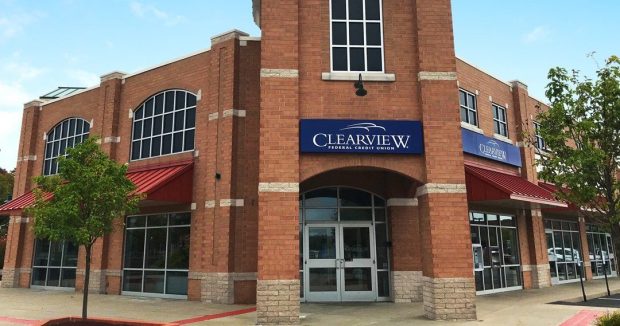Clearview Federal Credit Union on Maintaining Personalization in the Age of Digital Banking

Credit unions are getting their FinTech mojo by using data to personalize the member experience. Clearview Federal Credit Union’s Bill Snider explains how member data is helping CUs keep the high tech/high touch balance that keeps members from looking elsewhere for banking services.
The pandemic has pushed consumers to use mobile and online platforms more frequently, and businesses of all types have stepped up to offer solutions across these channels. Credit unions (CUs) have been particularly invested in innovation to keep their members’ personalized banking needs on track despite the disruption.
Members at Clearview Federal Credit Union are now accustomed to these digital solutions and have begun to settle into a new normal more than a year later, said Bill Snider, the CU’s vice president of digital strategy and marketing. He noted that usage of those channels is not just robust, but it is still growing. Continuing to build members’ enthusiasm and appreciation for digital innovation requires keeping their evolving needs in mind, rather than simply implementing the latest technology because it’s available.
“Sometimes that next flashy thing is cool, but you really have to balance that,” Snider said. “The thing that we always look at is, is there a solution, a service, that today only exists in the physical world? Then let’s make sure it’s also available online. And if it’s available online, let’s make sure that it’s available as well in the app so that everything is consistent.”
Keeping the cross-channel experience consistent for members also involves investing in the right tools. Snider said that Clearview, for example, has a unified video banking platform, Clearview Live, that is available via the CU’s website, mobile app and interactive teller machines (ITMs).
The services provided are consistent across interfaces, though members must use ITMs for cash transactions. Clearview has had ITMs for several years, but Snider explained that the pandemic prompted the CU’s expansion to video banking.
“We launched [Clearview Live] during the pandemic because we saw that need,” Snider said. “People could not get out, or maybe they didn’t want to get out, but they still needed to talk to somebody and still wanted to be able to interact.”
Snider said the solution has helped many members who have moved from the Pittsburgh area, where all its branches are located, but want to continue banking with Clearview. Some members use Clearview Live to call in weekly in the same way they made weekly branch visits, he explained, enabling bank personnel to build a rapport with members thousands of miles away.
“Year to date, from 2021, we talked to folks on video banking from 48 different states,” Snider said. “It really allows people to belong to Clearview who might have moved out of the area, really didn’t have a connection to Clearview, and that connection is now back.”
Staying Connected in a Digital Age
As CU members turn more and more to online and mobile banking channels, they also have more opportunities to bank with other financial institutions (FIs). This factor, paired with CUs’ need to keep up with the latest technologies, makes it more difficult for CUs to maintain close relationships with members, some of whom may never visit a physical branch. ITMs and video banking can solve some of these concerns, but harnessing modern tools to analyze and track member data can deliver insights to CUs that allow them to know and understand members better than ever before.
Marketing financial products to members previously involved mass mailings and generic outreach, but advancements in data analytics have changed that. CUs can now approach members with products tailored not just to their age ranges or incomes, but also to their individual needs.
“The days of batch-and-blast are over,” Snider said. “The days of, ‘Hey, it’s auto loan Tuesday, we’re going to send an email,’ that’s gone. We use data to make sure we send the right message at the right time to the right people. We know what products they have from us, and we have third-party data that tells us if they’re more open to new products.”
Snider said that members’ engagement with products allows CUs to see what is working and not and adjust as needed. Still, he explained, CUs must possess a data-driven mindset to best use these insights. CU executives need to listen to members and avoid disregarding data based on their gut feelings, as acting on this information can reinforce the personalized relationships for which CUs are known.
“Not only are we having those personal connections, which you can never replace, but even if somebody decides not to walk into a branch or call somebody, we still know them,” Snider said.
Data and Analytics Make the Member Experience More Personal
Third-party data can also help credit unions know whether members are procuring products such as car loans or mortgages from other FIs. CUs without these insights may not realize that a member was even in the market for these products, but now, they can use this knowledge to reach out and ensure that a member is aware of the loan options the CU offers.
“When our front-line folks talk to somebody, they’re having even more meaningful conversations because, yes, they have that personal knowledge of them, maybe from calling them before, but now they have additional information that they can use to make that conversation even better,” Snider said.
The digital transformation creates new ways for consumers to bank and establishes fresh competition for credit unions, but that does not mean that CUs must sacrifice personalization to keep up. Technologies such as mobile wallets, instant-issue cards and ITMs are just tools. Rather than changing how CUs serve their members, those tools can become an extension of the characteristics that have drawn members to CUs for decades.